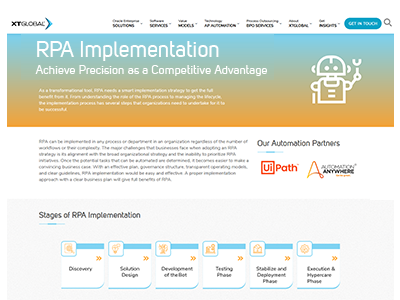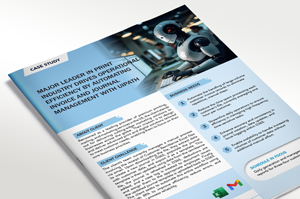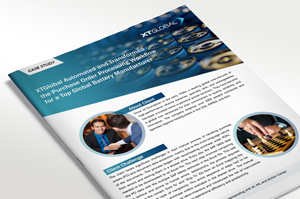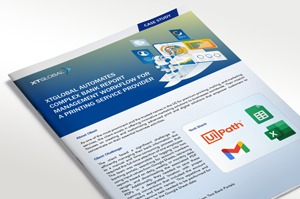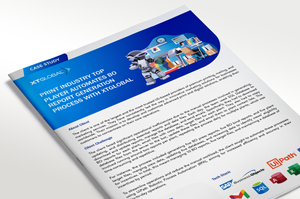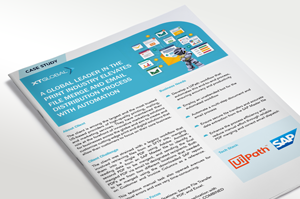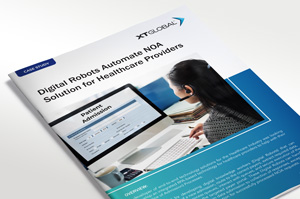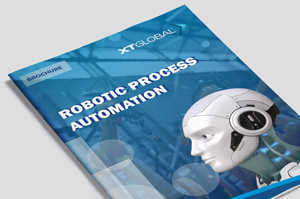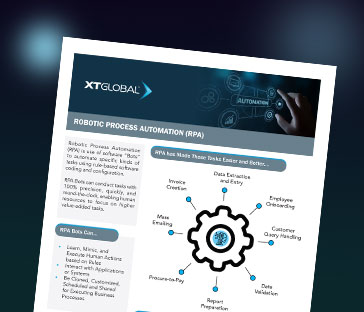If there is anything that modern businesses are yet to tackle, it is handling of voluminous, routine tasks that take up a lot of resource hours and are prone to manual errors. Empowering employees with technologies and moving to digitized solutions is the next best step. Organizations still depend greatly on outdated, time-consuming methods of data entry and people-centric processes to manage certain activities such as data extraction, report generation, invoice processing, service order management, system reconciliation and card activation. The truth of the matter is that, automating these tasks can reduce back office effort, improve customer service, and help your employees focus on higher value-added tasks.
Improve process efficiencies and meet unprecedented increase in demand by streamlining your workflows with automation. XTGlobal’s Automation/ RPA Advisory and Consulting Services offers customized solutions to step up your digital transformation. A rules-based virtual workforce can transform the front office, back office, and support functions, freeing your resources to focus on more strategic tasks.
Our Automation Partners
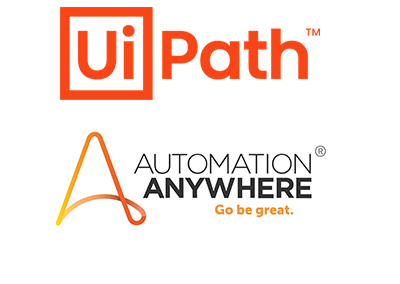
“Robotic Process Automation is use of “Robot” software to do certain tasks based on pre-set rules, regulations and standards.”
How Does Robotic Process Automation Work?
RPA makes use of software BOTS or digital workers that mimic human intelligence to a degree. These robots use artificial intelligence to capture data, run applications, trigger responses, and even communicate with other systems. RPA can be applied for processes which are highly manual, repetitive, rule-based, with low exceptions rate and standard electronic readable input.
Attended RPA
Attended RPA bots help individual employees with their tasks to improve their productivity. They are usually triggered by users’ actions and are generally dependent on instructions.
Unattended RPA
Unattended RPA Bots can function independently on rules-based processes and preset schedules. They are usually triggered by a logic in the process flow and can handle entire processes independently.
Where can RPA be Applied
- Payroll Management
- Benefits Administration
- Time and Attendance Management
- Recruitment Administrative Activities
- Resume Screening and Shortlisting
- Offer Letter Administration
- Onboarding and Offboarding
- Personnel Administration
- Employee Data Management
- Travel and Expense Management
- Training Administration
- Compliance and Reporting
- Period-end Processing
- Master Accounts Update across Systems
- Maintaining Attributes Across Systems
- Report Generation
- Adjustment Handling
- Procure-to-Pay
- Order-to-Cash
- Collections
- Vendor Management
- Incentive Claims
- Collections
- Sales Order Management
- Inter-company Transfers
- Accounts Reconciliation and Consolidation
- Process Accruals
- Reversal Handling
- Vendor On-boarding
- Purchase Order Creation
- Exception Adjustment Handling
- Liquidity Monitoring and Report Exceptions
- Customer Inquiries
- Order Management
- Customer Account Setup
- Document Processing
- Duplicate System Entry
- Inventory Management
- Demand and Supply Planning
- Invoice and Contract Management
- Work Order Management
- Returns Processing
- Freight Management
- Business & Sales Analytics
- In-Store Planning & Inventory Management
- Demand-Supply Planning
- Trade Promotions
- New Product Planning
- Marketing Planning
- Product Categorization
- ERP Management
- Customer Support & Call Center Processes
- Membership Management
- Pre-Population in Member and Provider Forms
- Explanation of Benefits
- Referrals
- Claims
- Verifications
- Claim exception handling
- Fraud and waste management
- Handle claims submission through settlement
- Renewals
- Bid management
- State on-boarding
- Network management
- Co-insurance
- Providers
- General Administration (Revenue cycle, Eligibility Checks, Claims Submission, Billing)
- Posting and reconciliation of payments
- Prior Authorization
- Process charge-offs and third-party references
- Processing applications
- Handling claims submission through settlement
- Identifying and routing suspected fraudulent claims
- Renewing policies in existing as well as new systems
- Identifying claims recovery opportunities
- Subrogating claims
- Changing coverage settings
- Canceling policy at customer request
- Processing bills from vendors
- Processing FNOL (first notice of loss)
- Adjusting claims
- Closing claims
- Bill of Materials (BOM)
- Administration and Reporting
- Customer Support and Service desk
- Data Migration
- Transport Management and Logistics
- Reporting (inventory, Accounts Payable and Receivable, Pricing)
- Multi-unit Management
- Pre-populating forms
- Account Management (Opening, Changing Data, Information Verification, Identifying exceptions, Reinstating/canceling/Suspending Accounts, Account Closure)
- Credit, Debit Cards and Loans Management
- Capital markets (Adding New Securities, Resolving Books and Record Breaks, Matching and Reconciling Security Positions, Reporting Current Position, Liquidity Monitoring and Reporting Exceptions)
- Content Generation and Curation
- Programmatic Media Bidding
- Voice Search
- Propensity Modeling
- Ad Targeting
- Lead Scoring
- Re-targeting
- Dynamic Pricing
- Web and App Personalization
- Predictive Customer Service
- Chatbots
- 1-1 Dynamic Content Emails

